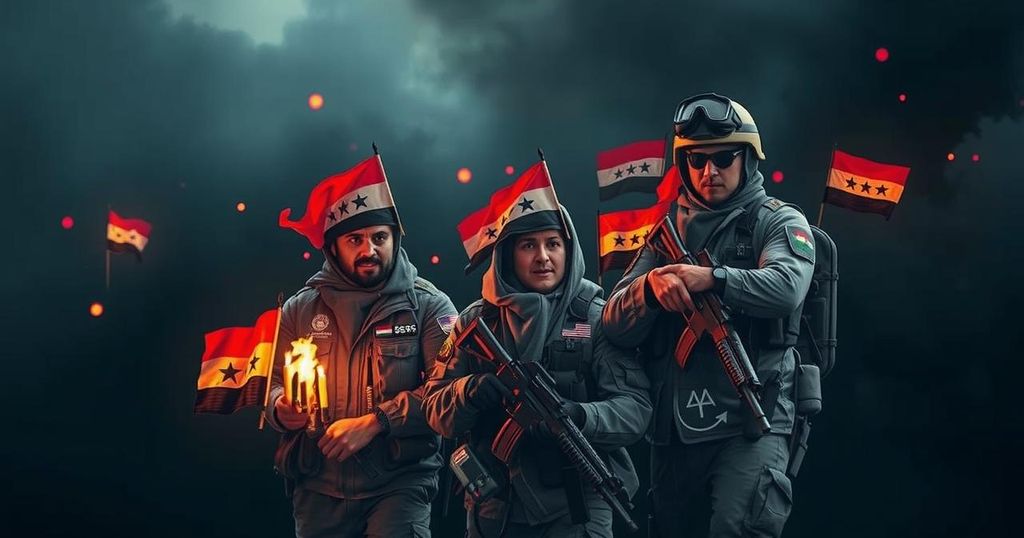Surprising Resurgence of Syrian Rebels Amidst Weakened Regime Support

Recent developments in Aleppo have seen Syrian rebels launch a surprise offensive, capitalizing on weakened support from Russia and Iran due to their military commitments elsewhere. This shift has exposed vulnerabilities in Assad’s regime, previously thought stable, and has resulted in HTS making significant territorial gains. The fragile balance of power may lead to ongoing conflict in the region as the situation evolves.
A sudden offensive by Syrian rebel forces near Aleppo has reshaped the region’s conflict dynamics, taking advantage of the shifting focus of Russian and Iranian military resources. Once a stronghold for the Syrian regime under President Bashar al-Assad, Aleppo was overtaken swiftly by rebel groups, illustrating a significant military resurgence amid the ongoing crises in Ukraine and Lebanon. This upheaval has unveiled vulnerabilities in Assad’s forces, traditionally bolstered by Russian and Iranian support, both of which have been compromised due to their engagements elsewhere.
Historically, Aleppo witnessed intense fighting during the Syrian civil war from 2012 to 2016, resulting in a decisive victory for Assad’s forces, supported by Russia. However, the Idlib region, where around five million remain under resistance, has persisted outside the regime’s control. A noteworthy shift occurred post-2020, when Turkey intervened, reinforcing the position of the jihadist group Hei’at Tahrir al-Sham (HTS), which has retained its localized dominance despite global sanctions.
After years of relative calm, the regime’s vulnerabilities became evident last week as rebel groups launched an offensive that reclaimed significant territory. Observers highlight the erosion of Russian military capability in Syria, primarily due to the redirection of assets to the war in Ukraine. Notably, S-300 missile systems were withdrawn in 2022, limiting Moscow’s operational strength in support of Assad’s regime. Despite airstrikes from Russia, the effectiveness in curbing the rebel advance has been negligible, suggesting a tactical disadvantage for government forces.
Parallel to this situation, Israel’s military actions against Iranian proxies, particularly in Lebanon, have further degraded support available to Assad. Analysts remark that the recent culmination of conflicts serves as a backdrop for HTS’s resurgence, with an observed reluctance from Iran to deploy military assets due to its own losses in engagements with Israel.
In light of these developments, it is evident that the Syrian conflict remains largely unresolved, with HTS having anticipated renewed hostilities. The speed of their advance has taken even them by surprise; yet it embodies a larger, unresolved confrontation in the region. The precarious balance of power is likely to evolve as both domestic and international complications deepen, indicating that the challenge to Assad’s regime will persist unabated, further fueling instability in the Middle East.
The Syrian civil war has been ongoing since 2011, characterized by complex geopolitical factors involving local and international actors. Aleppo, once a pivotal city for the regime, was recaptured by government forces with substantial Russian military assistance. However, rebel forces, particularly HTS, have remained resilient in the Idlib region, leading to sporadic flare-ups of conflict despite a ceasefire. The recent offensive highlights changing dynamics as both Russian and Iranian influence wanes, partly due to their commitments in other geopolitical crises, notably the war in Ukraine and Israel’s confrontations with Iranian affiliates.
The unexpected resurgence of Syrian rebels in Aleppo illustrates the shifting landscape of the Syrian civil war, exacerbated by diminished Russian and Iranian military support. As HTS takes advantage of these shifts, the resulting implications pose ongoing threats to the stability of the Assad regime. The conflicts in Ukraine and Lebanon have inadvertently revitalized a local struggle, marking a significant moment in a prolonged and unresolved war, with no immediate resolution in sight. Such dynamics warrant close observation as they will undoubtedly influence the broader geopolitical climate in the Middle East.
Original Source: www.theguardian.com





